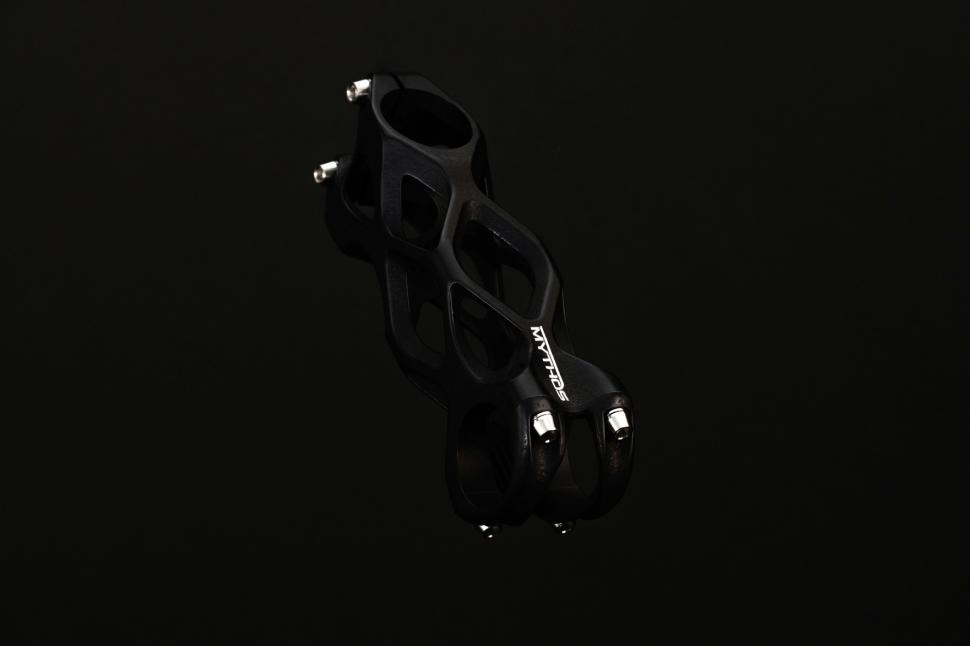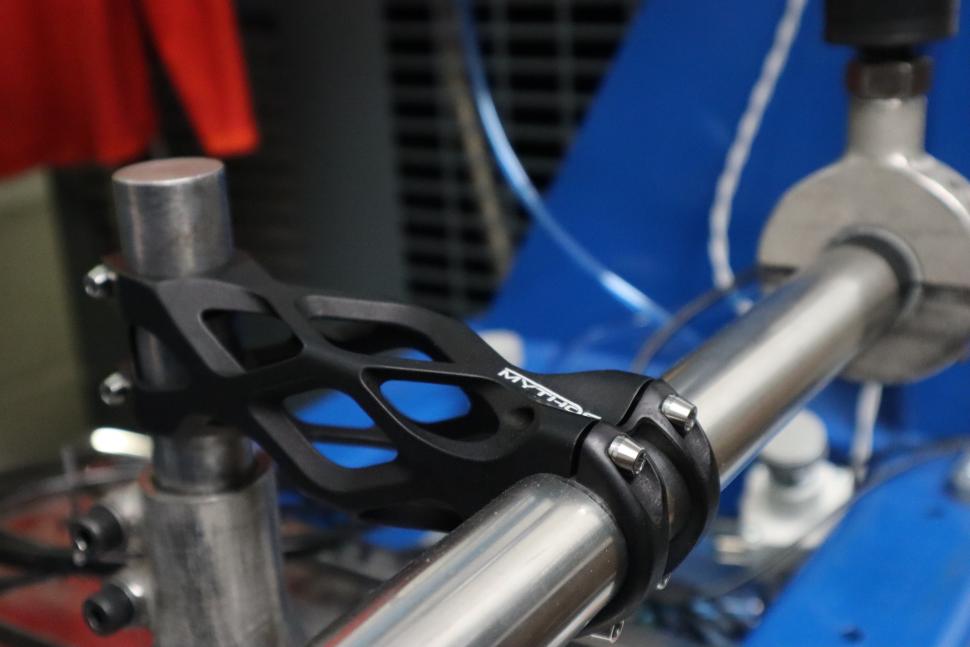- News
- Reviews
- Bikes
- Accessories
- Accessories - misc
- Computer mounts
- Bags
- Bar ends
- Bike bags & cases
- Bottle cages
- Bottles
- Cameras
- Car racks
- Child seats
- Computers
- Glasses
- GPS units
- Helmets
- Lights - front
- Lights - rear
- Lights - sets
- Locks
- Mirrors
- Mudguards
- Racks
- Pumps & CO2 inflators
- Puncture kits
- Reflectives
- Smart watches
- Stands and racks
- Trailers
- Clothing
- Components
- Bar tape & grips
- Bottom brackets
- Brake & gear cables
- Brake & STI levers
- Brake pads & spares
- Brakes
- Cassettes & freewheels
- Chains
- Chainsets & chainrings
- Derailleurs - front
- Derailleurs - rear
- Forks
- Gear levers & shifters
- Groupsets
- Handlebars & extensions
- Headsets
- Hubs
- Inner tubes
- Pedals
- Quick releases & skewers
- Saddles
- Seatposts
- Stems
- Wheels
- Tyres
- Health, fitness and nutrition
- Tools and workshop
- Miscellaneous
- Cross country mountain bikes
- Tubeless valves
- Buyers Guides
- Features
- Forum
- Recommends
- Podcast
TECH NEWS
 Mythos Elix stem header
Mythos Elix stem headerMythos releases quirky 3D printed Elix stem costing £500
Founded by ex-British Cycling and Team Sky designer Dimitris Katsanis, Mythos has forgone titanium in favour of Scalmalloy for its 3D printed stem. Weighing in at 150g, the Elix is said to be “usefully” stiff... but then you really would hope so with a £500 price tag.
We’ve seen plenty of 3D printed prototypes filtering their way into the cycling market, including some from big players such as Sram with their radical-looking cranks.
However, the Elix stem differs from many 3D printed components as not only is it commercially available right now, but it’s also made of Scalmalloy rather than a titanium alloy like we’ve grown accustomed to.
> Sram radically redesigns cranks
Scalmalloy is as the name suggests an alloy made of aluminium, magnesium, and scandium. The first aluminium-scandium alloys were developed by the Russians during the Cold War for use in MiG aircraft. There was a bit of a vogue for it among bike builders in the early 2000s and a some makers have stuck with the material. Scalmalloy was developed by Airbus and contains zirconium and manganese as well as aluminium, magnesium, and scandium. It’s widely considered the strongest aluminium alloy that’s suitable for additive manufacture and is also really expensive, which is probably why we don’t often see bike components made of the stuff.
As additive manufacturing (3D printing) works by adding layers of powdered material and melting that powder into the desired shape, it’s possible to reduce the amount of material used without compromising the overall strength. Mythos say that their EBM (Electron beam Melting) and DMLS (Direct Metal Laser Sintering) 3D printing gives their designers complete creative freedom and control whilst making it possible to create low volume parts much quicker than conventional methods due to not needing part-specific tooling. We’re fast-growing accustomed to the distinctive honeycomb lattice structure that 3D printing is responsible for, for example on Specialized Mirror Tech saddles.
> Specialized unveils high tech 3D printed saddle
They go on to say that “3D printing enables us to create high-quality components that are fundamentally impossible through traditional manufacturing methods.” This means that on the Elix stem they have been able to “significantly improve the useful stiffness and implement a new contemporary design. It not only performs at its best, it looks its best.”
Leaving the aesthetics to one side (we’re sure you’ve already cast your own opinion) the Elix stem weighs in at 150g, which is competitive but not exactly mind-blowing. It’s available in 100 to 130mm lengths which should satisfy the majority of road riders, and is available in a single +/- 8-degree angle.
The clamp diameter is a standard 31.8mm and the stack height is 45mm. You also get fancy titanium hardware (M5 x 16 mm). Mythos also says that the stem is compatible with internal cable routing, and specifically mentions the FSA ACR Integrated Cockpit System.
Now, if you watched the Tokyo Olympics then you might remember a certain Australian rider hitting the deck when his 3d printed stem failed within the first few meters. Mythos is quick to assure us that the Elix has been rigorously tested to the ISO 4210 test standard and has successfully passed all 94 tests it’s conducted preceding its release.
It also states that it performs its additive manufacturing processes to AS/EN9100 standard which includes strict quality controls such as Purchasing materials from qualified suppliers only, top quality metal 3D Printing machines, recording of the manufacturing process for every build, and layer images recorded on every single layer and analysed for faults.
There’s also the more traditional periodic batch testing taking place to capture any potential issues, including both powder checks and testing the tensile samples that we include in every build.
> Snapped 3D printed stem causes crash
Mythos was happy to tell us that its stems are manufactured at METRON A.E in Great Britain and believe that in terms of process control for additive manufacturing their processes follow the strictest standard in the cycling industry. It certainly has some good stats to back it up, with founder Dimitris Katsanis responsible for components assisting in over 100 gold medals across the Olympics, World Championships, and all 3 of cycling’s Grand Tours. He also played a part in the design of the very expensive 3D printed titanium power meter that we covered recently.
> Verve launches 3d printed titanium power meter
If any of that has convinced you that 3D printing is the future then you might be disappointed to hear that the stem has a rather whopping price tag of £500. We’ve got one on its way to the office for review before passing judgement...
Jamie has been riding bikes since a tender age but really caught the bug for racing and reviewing whilst studying towards a master's in Mechanical engineering at Swansea University. Having graduated, he decided he really quite liked working with bikes and is now a full-time addition to the road.cc team. When not writing about tech news or working on the Youtube channel, you can still find him racing local crits trying to cling on to his cat 2 licence...and missing every break going...
Latest Comments
- LookAhead 28 min 22 sec ago
I didn't take him to be calling this particular incident a mere encounter but rather to be using "encounters" to mean "opportunities for violent...
- mark1a 30 min 39 sec ago
I did notice the rim decals, but I knew you built the rim yourself after LeJoG so fair play to you sir and extra props for that. Not worth it until...
- Rendel Harris 1 hour 53 min ago
Come on guys, appreciate all the entertainment you provide and discussion you provoke but really, two seconds just skimming your articles for...
- chrisonabike 3 hours 30 min ago
Councils don't seem terrible keen ... maybe eburtthebike can give us the insider view in why not?...
- Kronsteen 3 hours 40 min ago
Maybe, and its just a thought, a huge multinational oil company might have the resources to provide safety kit like that. Anyone know of one?
- Hirsute 6 hours 48 min ago
Another pathetic sentence for killing a cyclist....
- Surreyrider 7 hours 8 min ago
You sound like the PR for hookless wheels. ...
- HoarseMann 8 hours 6 min ago
...and maybe a third? Don't forget the M49 'ghost' junction: https://www.bristolpost.co.uk/news/bristol-news/work-m49-ghost-junction-...
- ubercurmudgeon 10 hours 31 min ago
What a shit world we've created.




Add new comment
27 comments
Take my money.
It's pretty; but if it's neither the lightest, nor the cheapest, nor the most aero, then it's only going to have a handful of buyers...? Most of whom want something tailor-made with very specific dimensions.
From an engineering perspective: Why don't we have stems made with more than one material? As this stem makes visible, a bike stem is really just a truss structure. Carbon fibre is cheaper nowadays and it's got amazing tensional strength, so why not use a ribbon of carbon fibre for the truss chords which are under tension, then play with 3d printing, fancy alloys &c for the rest of the truss?
Scalmaloy...so aluminium with scandium added...a bit like most aluminium - including the Thomson Elite which is 5% lighter and 80% cheaper and 100% better looking.
Most aluminium alloys don't contain scandium.
There's a gert list of aluminium alloys and their composition on wikipedia. Scandium (Sc) appears in just 9 of them.
Thomson uses a 7000 series alloy, though they don't say which one. Zinc is the main alloying element in 7000 series alloys; none of them contain scandium.
Still...don't see what it adds here. Do you? The alloy is probably 0.1 to 0.5% Scandium, so it's not weight? Together with the other alloys it's suppose to be strong, but I've not managed to break my Thomson (no Sc) yet. So, apart from marketing, and aesthetics if you like it.... I'm struggling to see the benefit....
There's some good info here: https://www.bikeblogordie.com/2016/11/what-ever-happened-to-scandium-bike.html
Remember that finger trap in the Addams Family film...?
Just what is the point of that black on black picture of the stem?
That's for Hotblack Desiato
Needs the white graphic to be black though.
They're probably saving that for the special limited "black" edition
I thought it was legally required to use the term 'stealth edition' these days?
And is probably totally frictionless...
Unlike a Curlywurly which this also reminds me of
Looks like an energy bar to me. Only a can of Irn Bru could improve that picture
Someone really doesn't like black-on-black...
All very impressive as an example of what can be done with 3D printing. But for a handlebar stem on a bicycle?
Even more irrelevant when you consider that it is possible to get equivalents that will perform the same task for much less. And have better aero qualities.
Where this might be useful is for bespoke designs if you can't get a suitable stem off the shelf
And that's pretty much the whole point. I doubt Mythos expects to sell many of these stems.
I'm still struggling slightly to see what "the whole point" is - that you can spend 5-10x as much and still end up with something that is objectively worse (heavier and less aero) than existing products?
I have nothing against 3D printing but if they want to showcase the benefits of it, then they need to produce something that is actually an improvement over existing products - either a better product or an equivalent product at a lower price.
For example, the cottage industry that has sprung up selling 3D printed light mounts etc. seems to be a case where 3D printing has benefits - you can print them on demand at low cost, rather than having to develop plastic moulds etc. and order by the thousand.
I generally agree. This is a 'look at me!' product, and I suspect we'd be talking about it less if it were an improvement over existing products.
Given that they're asking a monkey for it the first of the three Ls seems entirely redundant.
If you had the right software, you could have made that stem on a 5 axis CNC
https://www.youtube.com/watch?v=msvfo6_Jq8E
You can do some pretty awsome stuff with metal printing though, parts that it wouldn't be possible to cast or machine.
3D printed your own opinion, shurely?
Cast is very brittle
Hmm. And you can get a Prime Carbon stem on wiggle that weighs 130g for £99.....
Or a Kalloy Uno 7 stem weighing around 110g for about £20... and then you can knock a few more grams off with some Ti bolts for not much more. Plus its more aero.
Looks impossible to attach a GPS computer or anything to this stem.
It's a lovely looking thing, but is a solution looking for a problem. Nice for customs and bike shows I guess.
I'd be wary about using Ti bolts on a stem. Although titanium is stronger weight-for-weight than steel, it's also less dense, so it will be weaker than the same size steel bolt. I don't know if there's many instances where Ti bolts fail, but I wouldn't want to find out.